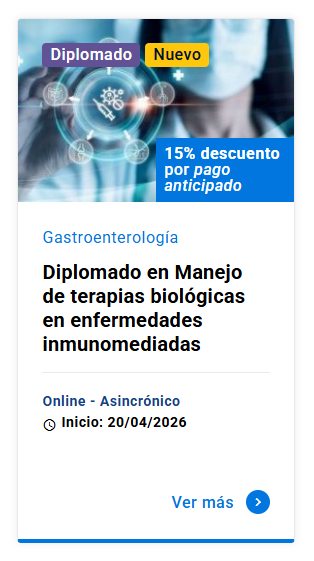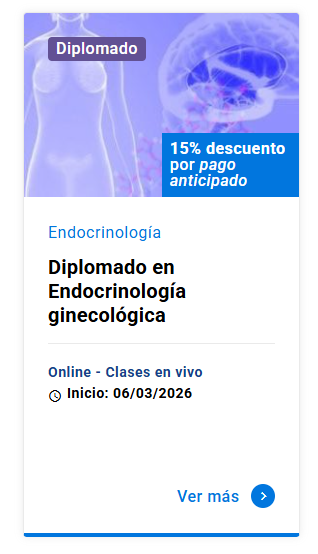Análisis de la evidencia científica tenida a la vista en el fallo del Tribunal Constitucional chileno con respecto a las Normas Ministeriales sobre Anticoncepción de Emergencia
DOI:
https://doi.org/10.11565/arsmed.v37i2.117Palabras clave:
levonorgestrel, método de Yuzpe, Tribunal Constitucional chilenoResumen
En el presente artículo efectuamos un análisis crítico de los aspectos científicos contenidos en el fallo del Tribunal Constitucional chileno que impugna la Norma Ministerial relacionada con la entrega de Anticoncepción de Emergencia (AE) en el sistema público de salud. El eje de la discusión está centrado en los argumentos expuestos por el fallo, que plantea la existencia de una duda razonable sobre el posible efecto antiimplantatorio de levonorgestrel (LNG) o del método de Yuzpe, y también por la revisión crítica a los argumentos esgrimidos por el voto disidente de los ministros Correa y Fernández, quienes fundamentan que no han podido concluir que exista dicha duda razonable a partir de la evidencia científica disponible en la causa. Como conclusión de nuestro análisis, nos llama la atención que de la lectura de la misma evidencia científica los expertos lleguen a opiniones contrapuestas. En segundo término, queremos destacar que los juristas no están eximidos del deber de hacer un análisis científico exhaustivo, especialmente en una materia tan compleja como esta. Finalmente, habiendo tenido acceso a la gran mayoría de los trabajos científicos tenidos a la vista o referidos tanto en el fallo como en el voto disidente de Correa y Fernández, concordamos con la disidencia, en el sentido de que no encontramos evidencia directa alguna que indique que LNG, administrado como AE, pueda tener un efecto antiimplantatorio, mientras que consideramos que existe una duda razonable sobre el mecanismo de acción del método combinado de Yuzpe.Descargas
Citas
Texto completo del fallo del Tribunal Constitucional de Chile, disponible en www. tribunalconstitucional.cl
Decreto Supremo Nº 48, del 26 de enero 2007, publicado en el Diario Oficial el 3 febrero 2007, el cual “Aprueba texto que establece las normas nacionales sobre regulación de la fertilidadâ€. Disponible en www.minsal.cl/juridico/DECRETO_48_07.doc.
Normas Nacionales sobre Regulación de la Fertilidad, Ministerio de Salud, Gobierno de Chile, año 2007. Disponible en http: //webhosting.redsalud.gov.cl/minsal/temas_salud/ proteccion/smujer.html 4 Comité de Aspectos Éticos de la Reproducción Humana y la Salud de las Mujeres (2007).
Anderson M. Endocrine function and emergency contraception: Physiology and society. Advan Physiol Educ 1998, 274: 46-51
Ashwood E. R., Knight G. J. Clinical chemistry of pregnancy. Burtis C. A., Ashwoo E. R., Bruns D. E. eds. Tietz Textbook of Clinical Chemistry and Molecular Diagnostics 2006: 2153-2206 Elsevier Saunders St. Louis. 7 Wilcox A. J., Baird D. D., Dunson D., McChesney R., Weinberg C. R. Natural limits of pregnancy testing in relation to the expected menstrual period. Jama 2001; 286: 1759-61. 8 McChesney R., Wilcox A. J., O’Connor J. F., Weinberg C. R., Baird D. D., Schlatterer
J.P. et al. Intact HCG, free HCG beta subunit and HCG beta core fragment: longitudinal patterns in urine during early pregnancy. Hum Reprod 2005; 20: 928-35.
Gemzell-Danielsson K., Marions L. Mechanisms of action of mifepristone and levonorgestrel when used for emergency contraception. Hum Reprod Update 2004; 10: 341-8.
Lalitkumar P. G., Lalitkumar S., Meng C. X., Stavreus-Evers A., Hambiliki F., Bentin-Ley U. et al. Mifepristone, but not levonorgestrel, inhibits human blastocyst attachment to an in vitro endometrial three-dimensional cell culture model. Hum Reprod 2007; 22: 3031-7.
Randomized controlled trial of levonorgestrel versus the Yuzpe regimen of combined oral contraceptives for emergency contraception. Task Force on Postovulatory Methods of Fertility Regulation. Lancet. 1998; 352: 428-33.
David S., Loose and George M. Stancel. Hormonal Contraceptives, en Chapter 57. Estrogens and Progestins. Disponible en http: /www.accessmedicine.com.ezproxy.Pontificia Universidad Católica de Chile.cl/resourceTOC.aspx?resourceID=28. Fecha de acceso 9 octubre 2008.
Fallo del TCCh, Acápite VI.5 Observaciones en cuanto al fondo del requerimiento, Capítulo de inconstitucionalidad planteado en el requerimiento de autos, referido a la eventual vulneración del artículo 19, Nº 10, inciso tercero de la Carta Fundamental.
Fallo del TCCh, considerando XII, “Antecedentes tenidos a la vista por el Tribunalâ€.
Williamson y cols. Informe de la Pontificia Universidad Católica ante el Tribunal Constitucional: “Mecanismos de acción del LNG AE y sus efectos sobre la ovulación, sobre los espermatozoides, sobre la implantación (dando cuenta de las investigaciones existentes en la materia: estudios en animales, estudios sobre los efectos en el endometrio, estudios in vitro y estudios piloto en humanos; la evidencia epidemiológica directaâ€, publicado en este número.
Fallo TCCh, Acápite III, “Anticoncepción Hormonal de Emergenciaâ€, considerando vigesimoquinto.
Fallo TCCh, considerando vigesimoctavo de la parte expositiva.
Consultado en http: //www.wordreference.com/es
Fallo TCCh, considerando trigésimo segundo de la parte expositiva.
Trussell J., Ellertson C., Dorflinger L. Effectiveness of the Yuzpe regimen of emergency contraception by cycle day of intercourse: implications for mechanism of action. Contraception 2003; 67: 167-71.
Glasier A. Emergency postcoital contraception. N Engl J Med 1997; 337: 1058-64.
OMS, Boletín Nº 51 de 1999, Progress in Human Reproduction.
Fallo TCCh, considerando trigésimo octavo de la parte expositiva. 24 Consultado en http: //www.rae.es 25 Fallo TCCh, considerando sexagésimo cuarto de la parte expositiva.
Patricio Zapata: “El fallo Píldora del día después. Comentario sobre la sentencia del Tribunal Constitucional chileno de fecha 18 de abril de 2008â€, el cual fue entregado por el autor luego de una presentación al respecto realizada en la Universidad Católica de Chile.
Fallo TCCh, prevención del Sr. Raúl Bertelsen. 28 Fallo TCCh, voto concurrente del Sr. Mario Fernández. 29 Fallo TCCh, voto concurrente del Sr. Marcelo Venegas.
Fallo TCCh, voto disidente del Sr. Juan Colombo. 31 Fallo TCCh, voto disidente del Sr. Hernán Vodanovic.
Fallo TCCh, voto disidente de los ministros Jorge Correa y Francisco Fernández, también referido como voto de minoría o voto Correa-Fernández en este artículo.
Croxatto H. B., Brache V., Pavez M., Cochon L., Forcelledo M. L., Ãlvarez F. et al. Pituitary-ovarian function following the standard levonorgestrel emergency contraceptive dose or a single 0.75-mg dose given on the days preceding ovulation. Contraception 2004; 70: 442-50.
Durand M., del Carmen Cravioto M., Raymond E. G., Durán-Sánchez O., De la Luz Cruz-Hinojosa M., Castell-Rodríguez A. et al. On the mechanisms of action of short-term levonorgestrel administration in emergency contraception. Contraception 2001; 64: 227-34.
Hapangama D., Glasier A. F., Baird D. T. The effects of peri-ovulatory administration of levonorgestrel on the menstrual cycle. Contraception 2001; 63: 123-9.
Landgren B. M., Johannisson E., Aedo A. R., Kumar A., Shi Y. E. The effect of levonorgestrel administered in large doses at different stages of the cycle on ovarian function and endometrial morphology. Contraception 1989; 39: 275-89.
Marions L., Hultenby K., Lindell I., Sun X., Stabi B., Gemzell Danielsson K. Emergency contraception with mifepristone and levonorgestrel: mechanism of action. Obstet Gynecol 2002; 100: 65-71.
Marions L., Cekan S. Z., Bygdeman M., Gemzell-Danielsson K. Effect of emergency contraception with levonorgestrel or mifepristone on ovarian function. Contraception 2004; 69: 373-7.
Massai M. R., Forcelledo M. L., Brache V., Tejada A. S., Salvatierra A. M., Reyes M. V. et al. Does meloxicam increase the incidence of anovulation induced by single administration of levonorgestrel in emergency contraception? A pilot study. Hum Reprod 2007; 22: 434-9.
Okewole I. A., Arowojolu A. O., Odusoga O. L., Oloyede O. A., Adeleye O. A., Salu J. et al. Effect of single administration of levonorgestrel on the menstrual cycle. Contraception 2007; 75: 372-7. de LH y que interfería con la ovulación. En consecuencia, los ministros interpretan correctamente la evidencia aportada o referida en la causa, en el sentido de que todos estos trabajos muestran inequívocamente que LNG, administrado como AE, es capaz de inhibir la ovulación, especialmente cuando el folículo dominante tiene un tamaño <18 mm y que este efecto no ocurre en la totalidad de los casos.
Brito K. S., Bahamondes L., Nascimento J. A., de Santis L., Munuce M. J. The in vitro effect of emergency contraception doses of levonorgestrel on the acrosome reaction of human spermatozoa. Contraception 2005; 72: 225-8.
Dunson T. R., Blumenthal P. D., Ãlvarez F., Brache V., Cochon L., Dalberth B. et al. Timing of onset of contraceptive effectiveness in Norplant implant users. Part I. Changes in cervical mucus. Fertil Steril 1998; 69: 258-66.
Kesserü E., Garmendia F., Westphal N., Parada J. The hormonal and peripheral effects of d-norgestrel in postcoital contraception. Contraception 1974; 10: 411-24.
Yeung W. S., Chiu P. C., Wang C. H., Yao Y. Q., Ho P. C. The effects of levonorgestrel on various sperm functions. Contraception 2002; 66: 453-7.
Wilcox A. J., Weinberg C. R., Baird D. D. Timing of sexual intercourse in relation to ovulation. Effects on the probability of conception, survival of the pregnancy, and sex of the baby. N Engl J Med 1995; 333: 1517-21. 46 Novikova N., Weisberg E., Stanczyk F. Z., Croxatto H. B., Fraser I. S. Effectiveness of levonorgestrel emergency contraception given before or after ovulation - pilot study. Contraception 2007; 75: 112-8.
Trussell J., Raymond E. G. Statistical evidence about the mechanism of action of the Yuzpe regimen of emergency contraception. Obstet Gynecol 1999; 93: 872-6.
Randomized controlled trial of levonorgestrel versus the Yuzpe regimen of combined oral contraceptives for emergency contraception. Task Force on Postovulatory Methods of Fertility Regulation. Lancet 1998; 352: 428-33.
Landgren B. M., Johannisson E., Aedo A. R., Kumar A., Shi Y. E. The effect of levonorgestrel administered in large doses at different stages of the cycle on ovarian function and endometrial morphology. Contraception 1989; 39: 275-89.
Novikova N., Weisberg E., Stanczyk F. Z., Croxatto H. B., Fraser I. S. Effectiveness of levonorgestrel emergency contraception given before or after ovulation – a pilot study. Contraception 2007; 75: 112-118.
Stirling A., Glasier A. Estimating the efficacy of emergency contraception-how reliable are the data? Contraception 2002; 66: 19-22.
Wilcox A. J., Baird D. D., Dunson D., McChesney R., Weinberg C. R. Natural limits of pregnancy testing in relation to the expected menstrual period. Jama 2001; 286: 1759-61.
Espinós-Gómez J. J., Senosiain R., Mata A., Vanrell C., Bassas L., Calaf J. What is the seminal exposition among women requiring emergency contraception? A prospective, observational comparative study. Eur J Obstet Gynecol Reprod Biol 2007; 131: 57-60.
Novikova N., Weisberg E., Stanczyk F. Z., Croxatto H. B., Fraser I. S. Effectiveness of levonorgestrel emergency contraception given before or after ovulation – a pilot study. Contraception 2007; 75: 112-118.
Von Hertzen H., Van Look P. F. Research on new methods of emergency contraception. Fam Plann Perspect 1996; 28: 52-57
Glasier A. Emergency postcoital contraception. N Engl J Med 1997; 337: 1058-1064.
Trussell J., Ellerston C., Dorflinger L. Effectiveness of the Yuzpe regimen of emergency contraception by cycle day of intercourse: implications for mechanism of action. Contraception 2003; 67: 167-171.
Müller A. L., Llados C. M., Croxatto H. B. Postcoital treatment with levonorgestrel does not disrupt post-fertilization events in the rat. Contraception 2003; 67: 415-419.
Oritz M. E., Ortiz R. E., Fuentes M. A., Parraguez V. H., Croxatto H. B., Post-coital administration of levonorgestrel does not interfere with post-fertilization events in the new-world monkey Cebus apella. Hum Reprod 2004; 19: 1-5.
Ugocsai G., Rozsa M., Ugocsai P. Scanning electron microscopic (SEM) changes of the endometrium in women taking high doses of levonorgestrel as emergency postcoital contraception. Contraception 2002; 66: 433-7.
Paltieli Y., Eibschitz I., Ziskind G., Ohel G., Silbermann M., Weichselbaum A. High progesterone levels and ciliary dysfunction-a possible cause of ectopic pregnancy. J Assist Reprod Genet 2000; 17: 103-6.
Mandelin E., Koistinen H., Koistinen R., Affandi B., Seppala M. Levonorgestrel-releasing intrauterine device-wearing women express contraceptive glycodelin A in endometrium during midcycle: another contraceptive mechanism? Hum Reprod 1997; 12: 2671-5.
Young D. C., Wiehle R. D., Joshi S. G., Poindexter A. N., 3rd. Emergency contraception alters progesterone-associated endometrial protein in serum and uterine luminal fluid. Obstet Gynecol 1994; 84: 266-71.
Kesserü E. 1974, óp. cit.
Lalitkumar P. G., Lalitkumar S., Meng C. X., Stavreus-Evers A., Hambiliki F., Bentin-Ley U. et al. Mifepristone, but not levonorgestrel, inhibits human blastocyst attachment to an in vitro endometrial three-dimensional cell culture model. Hum Reprod 2007; 22: 3031-7.
Fallo del TCCh, voto disidente Correa y Fernández, considerando IV sobre “La consejería y distribución de los fármacos para la anticoncepción de emergencia y el derecho a la vidaâ€.
Raymond E. G., Lovely L. P., Chen-Mok M., Seala M., Kurman R. J., Lessey B. A. Effect of the Yuzpe regimen of emergency contraception on markers of endometrial receptivity. Hum Reprod 2000; 15: 2351-5.
Marions L., Hultenby K., Lindell I., Sun X., Stabi B., Gemzell Danielsson K. Emergency contraception with mifepristone and levonorgestrel: mechanism of action. Obstet Gynecol 2002; 100: 65-71.
Descargas
Publicado
Cómo citar
Número
Sección
Categorías
Licencia
Derechos de autor 2008 ARS MEDICA Revista de Ciencias Médicas

Esta obra está bajo una licencia internacional Creative Commons Atribución-CompartirIgual 4.0.
Los autores/as conservan sus derechos de autor y garantizan a la revista el derecho de primera publicación de su obra, la que estará simultáneamente sujeta a la Licencia CC BY-SA 4.0 (Ver declaración de Acceso Abierto).







